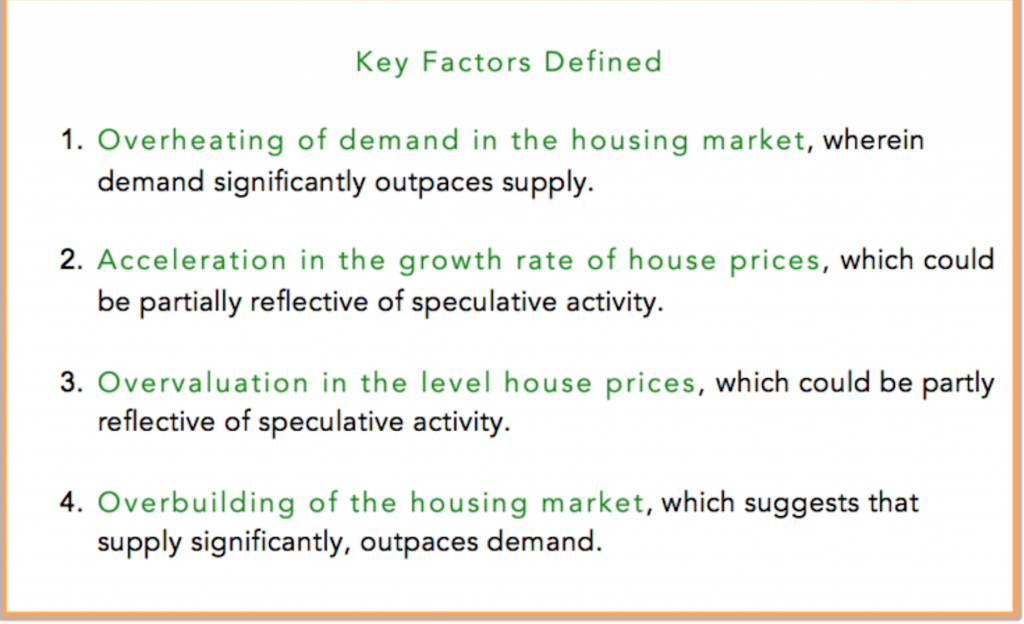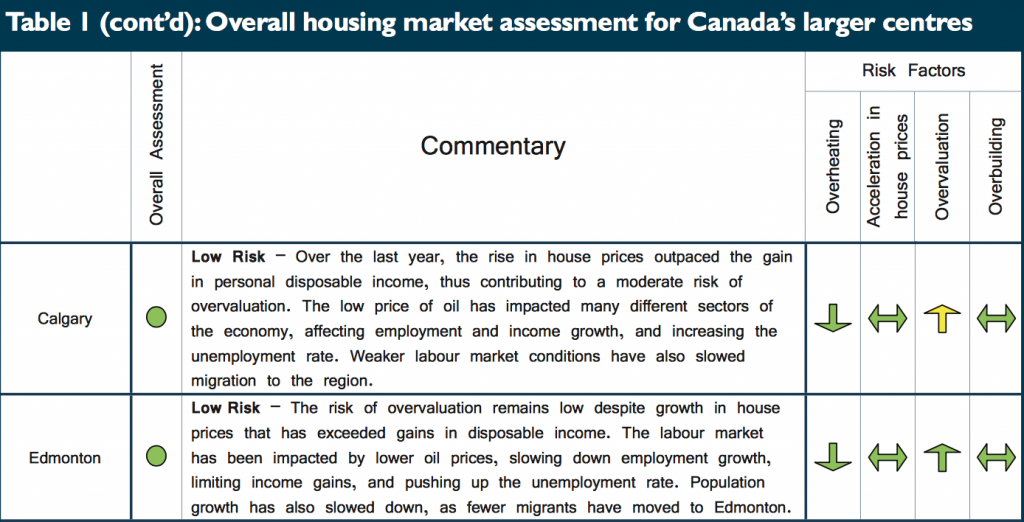YEG Presents Lower Risk Market than National Average
Tue, 22 SepThe Canada Mortgage and Housing Commission (CMHC) has published results from their most recent quarterly HPAA (House Price Analysis and Assessment) Framework. This report announced the most recent findings on present housing market risks in Canadian Census Metropolitan Areas.
Click here to view our summary on last quarter’s report and compare market changes.
The four areas of risk that are estimated quarterly by the CMHC include overheating, acceleration in growth of house prices, overvaluation, and overbuilding. The report also indicates the consideration of factors such as “demographic, economic, and financial factors such as population growth, change in personal disposable income, and interest rates.”
Overall national assessments show the four categories averaging out to a ‘low risk’ market. Some moderate yet stable overvaluation is occurring as residences are being priced at slightly above personal disposable income and population growth. Inventory is presenting at low risk, yet is slightly above historical averages. The report indicates that on a national level “overheating and acceleration in house prices are not a concern at this time”.
What does this mean for Albertans specifically? As a province we seem to be very much in line with the national averages, with Edmonton showing slightly better results than the Calgary market.
Calgary’s minor risks occur in the area of house prices, which are gaining quicker than personal disposable income, therefore overvaluation is the only factor presenting a moderately increased risk factor. The report attributes these pacing issues with low oil prices impacting income growth and unemployment. Additionally, there has been a slowing of incoming population growth due to “weaker market conditions” in the region.
Edmonton presents no moderate risk factors at this time, despite national and regional issues with overvaluation. Some economic changes occurring in the region may indicate future risks however. The report again cites lower oil prices slowing employment growth and limiting migration to the city. Ass of yet these factors have yet to show significant statistical impact on the market however.




